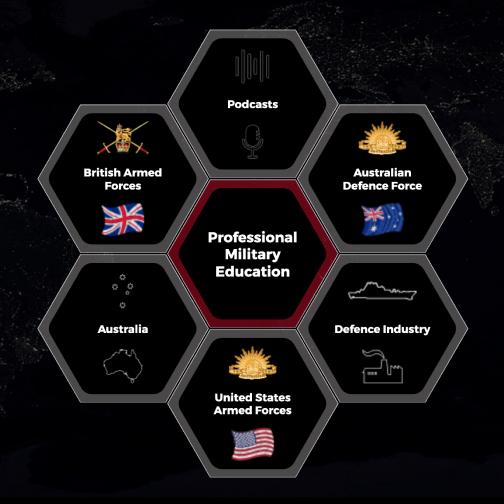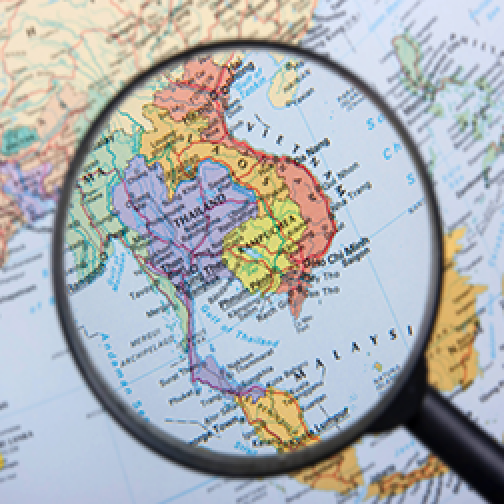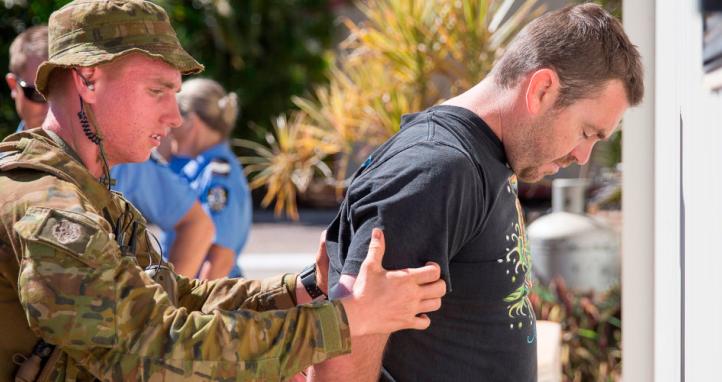Facts and figures
| Total military personnel | 1,469,000 |
| Total military expenditure | $USD 1.60 billions |
| Military expenditure as a percentage of total Global expenditure | 0.07% |
The ‘Know Your Region’ series is designed to support unit and individual professional military education on the Indo-Pacific region. It’s important for all serving members of our military to have a foundational knowledge of the countries and issues in the Indo-Pacific.
On this page:
- A short history
- Military strength
- Military cooperation
A Short History
North Korea's military traces back to the resistance movement against Japan’s occupation of Korea between 1910 to 1945. The country's first leader, Kim Il-sung, gained prominence as a guerrilla fighter in Manchuria with Soviet backing. He also served in the Soviet Red Army during World War II and fought alongside Chinese communists.
Following Japan’s defeat in 1945, Korea was divided at the 38th parallel with the Soviet Union occupying the north and the United States (U.S.) occupying the south. The Soviets supported the formation of a communist government in the north and helped train and equip a new military force under Kim Il-sung’s leadership.
The Korean People’s Army (KPA) was officially founded on February 8, 1948, a few months before the formal proclamation of the Democratic People’s Republic of Korea (DPRK) in September. The newly formed KPA was composed of Soviet-trained officers, Chinese Korean veterans, and Korean recruits who had served in Manchuria and the Soviet Union.
The first test of North Korea’s military power came on June 25, 1950, when the KPA launched a surprise attack against the South, beginning the Korean War. Initially successful, North Korean forces captured Seoul within three days and pushed South Korean and U.S. forces to the southeastern tip of the peninsula.
When victory was close at hand, a U.S.-led United Nations counteroffensive reversed the tide, and the North Korean forces were pushed back towards the Chinese border. The war expanded again when Chinese troops entered the war, resulting in a brutal stalemate that neither side could break. By the time an armistice was signed in 1953, over 1 million North Korean soldiers and civilians had been killed with millions more wounded or displaced. U.S. bombing raids flattened much of the country, destroying up to 85% of infrastructure.
The KPA emerged from the war with battle experience, a hardened ideology, and deep resentment toward the U.S. and South Korea. Kim Il-sung invested heavily in the military with help from both the Soviet Union and China, which provided weapons, tanks, aircraft, and training. He also created defensive fortifications along the DMZ, including underground facilities and tunnel networks.
In the 1960s, amid the Sino-Soviet split, Kim Il-sung leveraged both powers to maintain military aid and continue his military expansion. He also conducted border infiltrations and sabotage missions into South Korea, including the Blue House Raid (1968) – an assassination attempt on South Korean President Park Chung-hee by North Korean commandos – and numerous DMZ skirmishes, ambushes, and kidnappings.
Throughout the 1970s and 1980s, North Korea focused on developing its asymmetric military strategies to counter South Korea’s growing technological edge and alliance with the U.S. One high profile operation was the 1987 Korean Air Flight 858 bombing which killed 115 people. Acts of state terrorism reflected North Korea’s willingness to use military means as tools of foreign policy and psychological warfare.
The collapse of the Soviet Union in 1991 marked a turning point. North Korea lost critical military and economic support, leading to a prolonged economic crisis and famine. Despite this, the regime doubled down on military investment. Military spending reached up to 30% of GDP as the government pursued the “Juche” (self-reliance) ideology. In 1995, Kim Jong-il enshrined the “Songun” (military-first) policy, placing the KPA at the centre of national politics, resources, and decision-making.
Upon assuming power in 2011, Kim Jong-un continued a policy of military expansion but shifted toward technological modernisation. He has fast-tracked missile and nuclear weapons development, while also focusing on cyber warfare for both espionage and financial gain.
In recent years, North Korea’s military has continued to evolve with elaborate parades showcasing its military hardware and strength. At the same time, relations with South Korea have deteriorated with threats made on both sides. In 2023, North Korea withdrew from the 2018 inter-Korean military agreement, escalating tensions once again.
Military strength
As of 2025, North Korea maintains the fourth-largest military in the world by personnel.
According to estimates by the U.S. Defense Intelligence Agency (DIA) and South Korea’s Ministry of National Defense, North Korea’s military includes approximately 1.2 million active personnel with 6.3 million reserves.
The KPA is divided into five main branches:
- Korean People’s Army Ground Force (KPAGF) – ~950,000 personnel
- Korean People’s Navy (KPN) – ~60,000 personnel
- Korean People’s Air and Anti-Air Force (KPAAF) – ~110,000 personnel
- Strategic Rocket Forces – Oversees missile and nuclear operations
- Special Operations Force (SOF) – Estimated 180,000 troops trained for infiltration and unconventional warfare
Despite its size, the KPA relies heavily on obsolete Soviet-era equipment. Even with this disadvantage, advancements in missile and cyber capabilities have enhanced its threat profile.
Ground Forces
The KPAGF possesses approximately 4,300 tanks (mostly outdated T-55 and T-62 variants, along with indigenous designs like the Songun-915), 2,500 armoured personnel carriers, 8,600 artillery pieces – including self-propelled guns and multiple rocket launchers – and over 10,000 MANPADS and short-range surface-to-air missile systems (2024). The bulk of ground units are deployed near the Demilitarized Zone (DMZ), making any future conflict likely to escalate rapidly.
Navy
The KPN is modest in conventional strength but is looking to expand. As of March 2025, it has approximately 430 naval vessels, primarily small patrol boats, frigates, and corvettes, along with 70 submarines, including midget subs capable of infiltration and special operations.
Air Force
The KPAAF is largely composed of aging aircraft with roughly 800 combat aircraft, including MiG-21s, MiG-23s, and MiG-29s, 300 helicopters, including Mil Mi-2 and Mi-8/17 variants and a range of air defence systems including SA-2, SA-3, SA-5 surface-to-air missile systems and newer indigenous systems.
Despite being technologically inferior, North Korea has developed low-flying and radar-evading tactics for potential infiltration missions.
Cyber Capabilities
North Korea has become increasingly aggressive in cyber warfare. Units like Bureau 121 and the Reconnaissance General Bureau are tasked with cyber espionage, hacking, and financial theft. North Korea was responsible for the Sony Pictures hack (2014) and has succeeded in carrying out massive cryptocurrency thefts in recent years, estimated to total over $2 billion.
For more information on North Korea’s military, see resources below:
Videos:
- A Threat Like No Other: Russia-North Korea Military Cooperation
- North Korean Military Capabilities & Strategy – Nukes, Numbers & (bad) Economics
- Mass over quality: How North Korea's military really stacks up
- Panel discussion: Tracking North Korea’s military ambitions and diplomatic moves
Articles:
Know your region
Know Your Region series gives you a shortcut to understanding other nations in the Indo-Pacific region.









